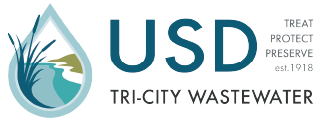A study conducted by Union Sanitary District (USD) in 1990’s focusing on wastewater discharges from automotive radiator shops to the sanitary sewer, found that in most cases levels of copper, lead, and zinc in the wastewater exceeded USD discharge limits and in some cases exceeded California hazardous waste discharge limits. The results indicated that the high levels of these pollutants were generated from various processes (hot tanks, flushing booths, floor drains, etc.) employed by many of these shops. As a result of the study, USD adopted the following discharge requirements for automotive radiator shops:
A. GENERAL REQUIREMENTS:
All radiator shops located within Union Sanitary District's service area are required to reduce the concentration of pollutants in their wastewater discharge to comply with local discharge limits, or discontinue all process discharge to the sanitary sewer (this excludes bathroom discharges).
All used anti-freeze must be recycled or hauled off-site by a licensed waste hauler. Under no circumstances may any used anti-freeze be discharged to the sanitary sewer.
No discharge of any kind may be redirected from the sanitary sewer to the storm drain.
B. ZERO DISCHARGE OPTION:
If a shop chooses to discontinue all process discharge to the sanitary sewer, all discharge points (including floor drains) must be disconnected and/or permanently plugged and sealed. The District must be notified when this action is completed.
C. SANITARY SEWER DISCHARGE OPTION:
If a shop chooses to continue discharging to the sanitary sewer, the following conditions must be met:
Compliance with all USD local discharge limits shall be maintained at all times by installing and maintaining an approved pretreatment system.
A completed permit application must be submitted to the District (including a wastewater characterization study). The applicant must pay all appropriate permit fees. The applicant is also required to sample the facility's process discharge once every quarter and have these samples analyzed by a California certified laboratory results submitted to the District.
Please direct any questions you may have regarding these requirements to the environmental compliance department at Union Sanitary District.

